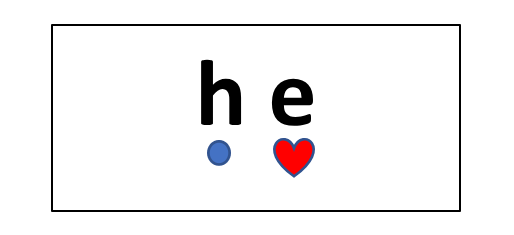In our ‘how to…’ series we are going to delve into all things phonics instruction and give you our expert advice on developing confident readers.
***
High-frequency words is another term for common words with tricky spellings, or high-frequency words with “irregular” spellings. The term “irregular” is a bit misleading because while beginner readers might find these words tricky to read, as they learn to decode, the words become decodable and therefore no longer “irregular”. These high-frequency words appear in the simplest of sentences, so we need a logical way to teach them.
In the past we may have explained to our beginner readers that these words were not decodable, and we may have taught the whole word by shape. Remember those flash cards? Now we realise that it is more efficient to present the words segmented into graphemes, with the tricky part highlighted.
For example, the word “he” would initially be considered a high-frequency word. Beginner readers will be able to decode the first letter ‘h’, but may struggle to decode the grapheme ‘e’ as the sound /ee/ as they have not yet learned that the letter ‘e’ can represent this sound. A dot is used under the letter ‘h’ to represent a single sound, and a heart is used under the letter ‘e’ to show that this is the tricky part that must be learnt “by heart”.

When we present heart words in this way, we help our beginner readers to make connections to more words with this spelling. This allows readers to use the phonics knowledge they already have for the simple part of the word, and to learn the tricky part. For example, after learning “he”, readers will learn the words “she”, “we”, “me” and “be” more quickly.
We now know that readers can read many more words than they have been taught explicitly. How does this happen? This has been explained by Share’s “self-teaching hypothesis”. Readers are continuously trying out the letter-sound correspondences they know and applying them to new words. When we show readers how to map words with complex spellings, we are helping them to make connections between new graphemes and the sounds they represent. They will then use these new letter-sound correspondences to decode new words they encounter.


